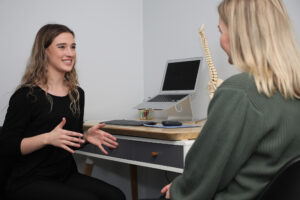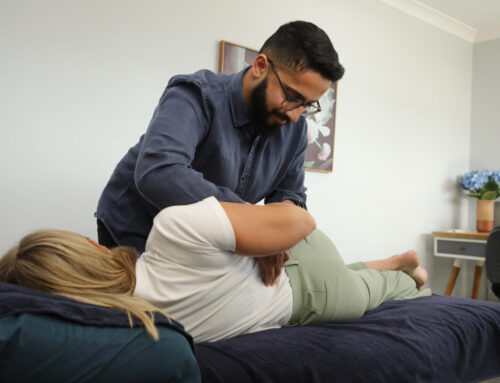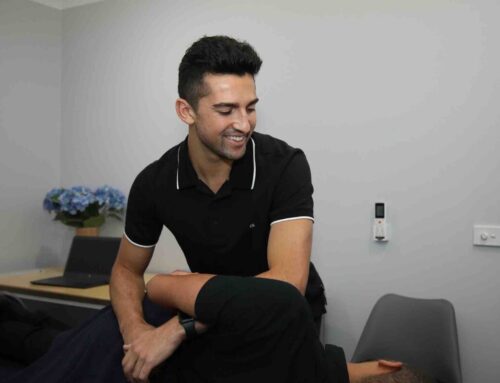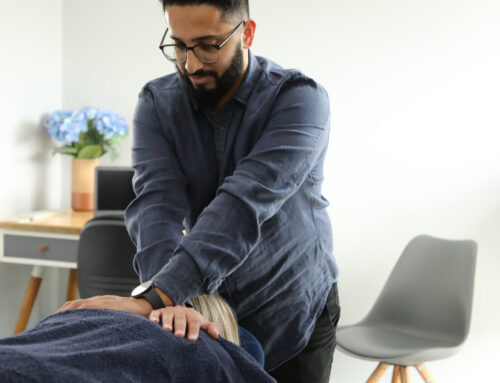 Neck pain can feel like a very annoying but unavoidable part of every desk worker’s life. From the tightness, to the aching, to even headaches, it feels like you are never able to break the cycle of the pain because your job perpetuates the pain.
Neck pain can feel like a very annoying but unavoidable part of every desk worker’s life. From the tightness, to the aching, to even headaches, it feels like you are never able to break the cycle of the pain because your job perpetuates the pain.
Here is some information about why the pain is starting, why it keeps coming back and what you can do to help fix it.
Why Does it Happen?
Neck pain for desk workers can seem like a catch 22. If I sit at my desk to do work, it hurts my neck and I end up getting less work done. And if I don’t sit at my desk I can’t concentrate as well and I don’t get any work done. One important question here is … How are you sitting at your desk? Or even more importantly what is your set up at your desk?
In general, a lot of desk workers have their desks set up in a way that will put strain on different aspects of your body. This can include your neck, your shoulders or your back. Over time this can fatigue the muscles in these areas. They are forced to work harder which results in them producing pain. Ongoing pain then causes these muscles to weaken. Other surrounding muscles in the area have to take up the slack, and this can lead to injuries like muscle strains and joint sprains because those tissues are doing too much work.

Forward head carriage
The most common type of posture that can cause neck pain is anterior head carriage. As you can see in this picture, this is when the head is at a forward tilt, and is not in line with the spine. This posture over extended periods can weaken and tighten the muscles at the front of the neck and chest. It also puts strain on the muscles at the back of the neck and around the shoulders muscles. The result is often aching, stiffness and pain in the neck and/or shoulders and can also lead to headaches, which can have an even greater impact on your daily life. To find out more about postural pain click here.
Why Does it Keep Coming Back?
Clients often say, “I just have a bad neck, I get it treated but it always comes back”. This doesn’t have to be the case. Clients often take the easy route of coming in for 2-3 treatments to make their neck feel better in the short term, but don’t actually do anything to fix the cause of the problem.
The actual cause of the issue may be your desk ergonomics, i.e. the positions and angles that your desk, chair, computer monitor, mouse and keyboard are located and make you sit in while you are at your desk. You can change or move these items to put your body in an optimum position for working at your desk. To find out more about desk ergonomics and other workplace safety measures click here.
 Another factor is that humans were not made for sitting for long periods of time, so it’s important to think about this while you’re at work. A sit to stand desk is a great option to help encourage moving around while you are at work. If this isn’t an option for you then building in 30- 60 second break times every 20 minutes will ensure that you aren’t sitting in one position for too long. This can just be a toilet break, a walk to get some water or even scheduled time for stretches and exercises.
Another factor is that humans were not made for sitting for long periods of time, so it’s important to think about this while you’re at work. A sit to stand desk is a great option to help encourage moving around while you are at work. If this isn’t an option for you then building in 30- 60 second break times every 20 minutes will ensure that you aren’t sitting in one position for too long. This can just be a toilet break, a walk to get some water or even scheduled time for stretches and exercises.
However, now your body is already sore, aching and stiff, another reason why the pain keeps coming back is that you didn’t rebuild the strength you lost. It is important to consider that you will have to complete an exercise program to help your body get back to normal and be able to cope with the load you are putting it under at work. Otherwise you can get caught in a cycle of it feeling better for a short period of time but not resolving the issue.
What Can I Do To Fix It?
The best plan to get on top of this type of pain is to take a 3 step approach.
Number 1:
Come in to see an Osteopath to get symptomatic relief for the muscle and joints in the area. We can help give you the tools to address the pain, stiffness and tightness in the short term and get you back into your activities that this pain has stopped you from being able to do. To make an appointment click here.
Number 2:
Strengthening, stretching and mobilising the muscles and joints in the area to be able to cope with the load you are putting your body under at work, including exercises for your neck, chest, shoulders and back. These may include exercises you can do by yourself at home, exercises you can do at the gym or even exercises that you can perform at your desk. We have a whole library of exercises on our Youtube channel.
Number 3:
Ensure you have the correct ergonomic set up at work that suits you and your needs. This can be sometimes organised through your OH&S representative at work, so having a chat with them is a great option to help you feel more supported in your workplace.
 Alternatively, your Osteopath can give you information that can help you identify where you can make improvements to your ergonomic set up.
Alternatively, your Osteopath can give you information that can help you identify where you can make improvements to your ergonomic set up.
If you are a sufferer of neck and shoulder pain and would like to get on top of it then give us a call or book online to make an appointment with one of our friendly Osteopaths. If you have any questions about your neck pain, feel free to email me maya@pakenhamosteopathy.com.au




